*NURSING > QUESTION PAPER & MARK SCHEME > Straighterline A&P 1 Cumulative Final Questions and answers. Latest, For help with Straighterline co (All)
Straighterline A&P 1 Cumulative Final Questions and answers. Latest, For help with Straighterline courses, reach me at [email protected]. I guarantee Grade A+ whih is 95% and above
Document Content and Description Below
Which is an example of a normally occurring positive-feedback mechanism? - Ans-stretching of the uterus near the end of pregnancy Which of the following is the most widely distributed type of muscl... e in the body? - Ans-Smooth A doctor performing an autopsy on a patient concludes that part of the brain was likely damaged by trauma due to a large population of which type of cell? - Ans-microglia During DNA replication, how does each template strand eventually become two identical DNA molecules? - Ans-One strand forms continuously, the other forms in short segments spliced by DNA ligase Which is the most superficial layer of skin that is composed primarily of living cells? - Ans-stratum spinosum Which of the following components of the bone matrix, when removed, allows the bone to be easily shattered? - Ans-Collagen The targeted response of the hormone lipotropin is an increase in which of the following? - Ans-the breakdown of fat in adipose tissues What is the smallest level of organization in the body that contains the body's genetic information? - Ans-cellular Which sentence best describes the sliding filament model of muscle contraction? - Ans-Sarcomeres and myofibrils contract Which of the following is the definition of a third degree burn? - Ans-a burn that has destroyed the dermis and epidermis Which class of chemical messengers is secreted by neurons into synaptic clefts to activate an adjacent cell? - Ans-Neurotransmitter Which of the following types of openings in the skeletal system does a "sinus" describe? - Ans-Cavity Which of the following processes generates the most ATP within a human cell? - Ans-Oxidative phosphorylation What type of axons is found in a gray ramus comunicans? - Ans-unmyelinated, post-ganglionic axons Deep means - Ans-Away from the surface Which of the following is consistent with homeostasis? - Ans-As body temperature rises, sweating occurs to cool the body which of the following describes the position of the nose? - Ans-Superior to the mouth An organelle is - Ans-A small structure within a cell Posterior means - Ans-Toward the back of the body Which body system would be affected by degeneration of cartilage in joints? - Ans-Skeletal Inferior - Ans-Pointing towards the feet (down) The study of tissues is - Ans-histology Cephalic means - Ans-closer to the head the term "dorsal" means - Ans-toward the back of the body The thumb is ______ to the fifth digit (little finger). - Ans-lateral The shoulder is _______ to the elbow - Ans-proximal The inguinal region is commonly known as the - Ans-Groin Nerve cells generate electrical signals in response to changes in the environment. This is an example of - Ans-responsiveness Magnetic resonance imaging is based on the movement of - Ans-protons in a magnetic field The pectoral region is the - Ans-chest area An increase in the number of cells is - Ans-Growth What system removes nitrogenous waste products from the blood and regulates blood pH, ion balance, and water balance? - Ans-urinary The sural region is the - Ans-calf An anatomic image created from sound waves is a - Ans-sonogram the lumbar region is the - Ans-lower back Which of the following systems carries necessary compounds like oxygen and nutrients throughout the body? - Ans-cardiovascular Anatomy is - Ans-the study of structure the visceral pleura is - Ans-the serous membrane that covers the lungs Which of the following is most similar to the negative feedback mechanism in human physiology? - Ans-A toilet tank refills itself after a flush The pleural cavity is the - Ans-space located between the visceral and parietal pleura The popliteal region is the - Ans-hollow behind the knee Organize the following structural levels of the human body from simplest to most complex. (1) Cell (2) tissue (3) chemical (4) organ system (5) organ - Ans-3,1,2,5,4 The cavity of the body immediately inferior to the diaphragm is the ____________ cavity - Ans-abdominal The change in shape of tissues or organs is called - Ans-morphogensis Homeostasis is defined as - Ans-the maintenance of a relatively constant environment within the body An organism's ability to use energy in order to swim is an example of - Ans-metabolism A researcher discovered a sensory receptor that detects decreasing oxygen concentrations in the blood. According to the principles of negative feedback, it is likely that stimulation of this sensory receptor will produce which of the following types of responses? - Ans-an increase in the respiratory rate [Show More]
Last updated: 10 months ago
Preview 1 out of 29 pages
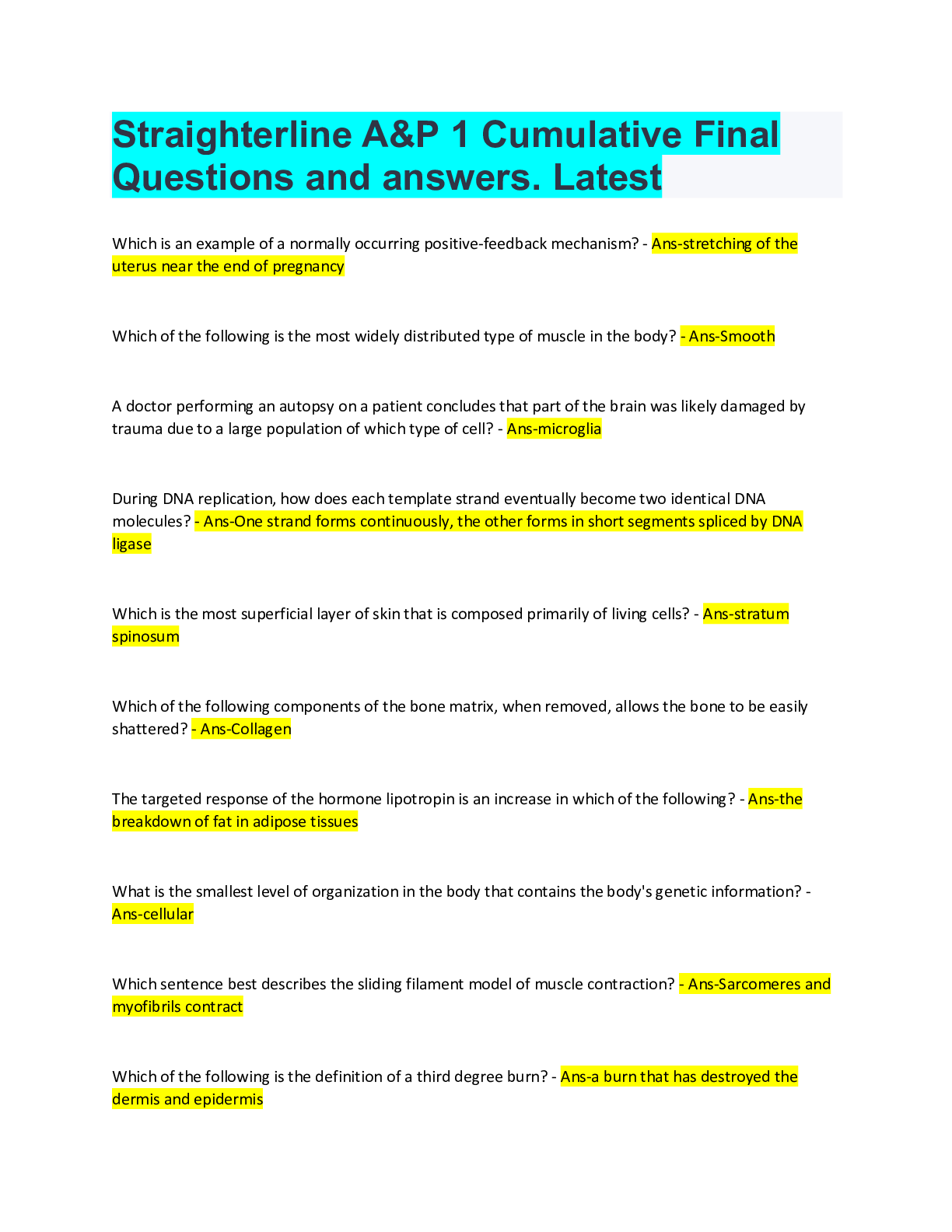
Reviews( 0 )
Document information
Connected school, study & course
About the document
Uploaded On
Jun 10, 2022
Number of pages
29
Written in
Additional information
This document has been written for:
Uploaded
Jun 10, 2022
Downloads
0
Views
46


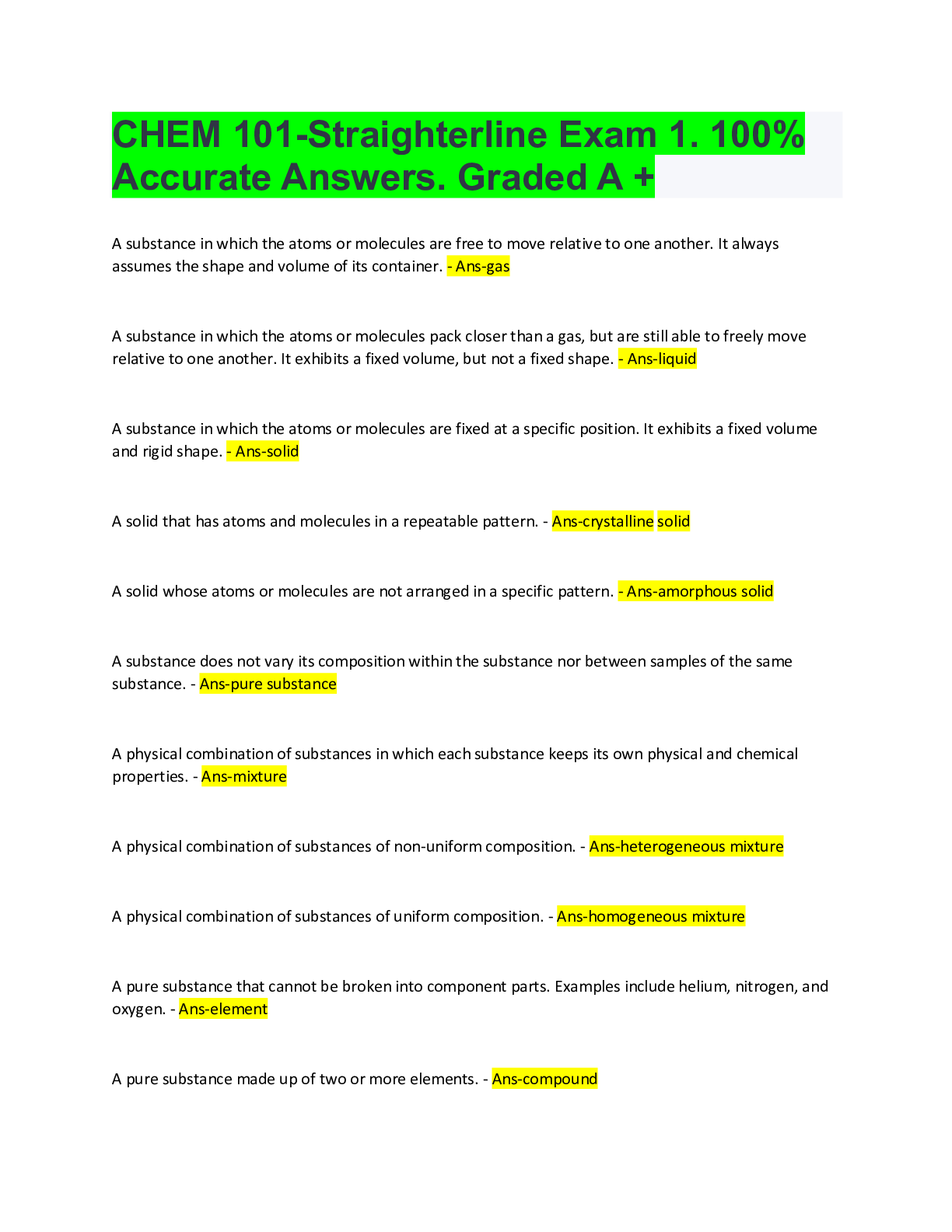
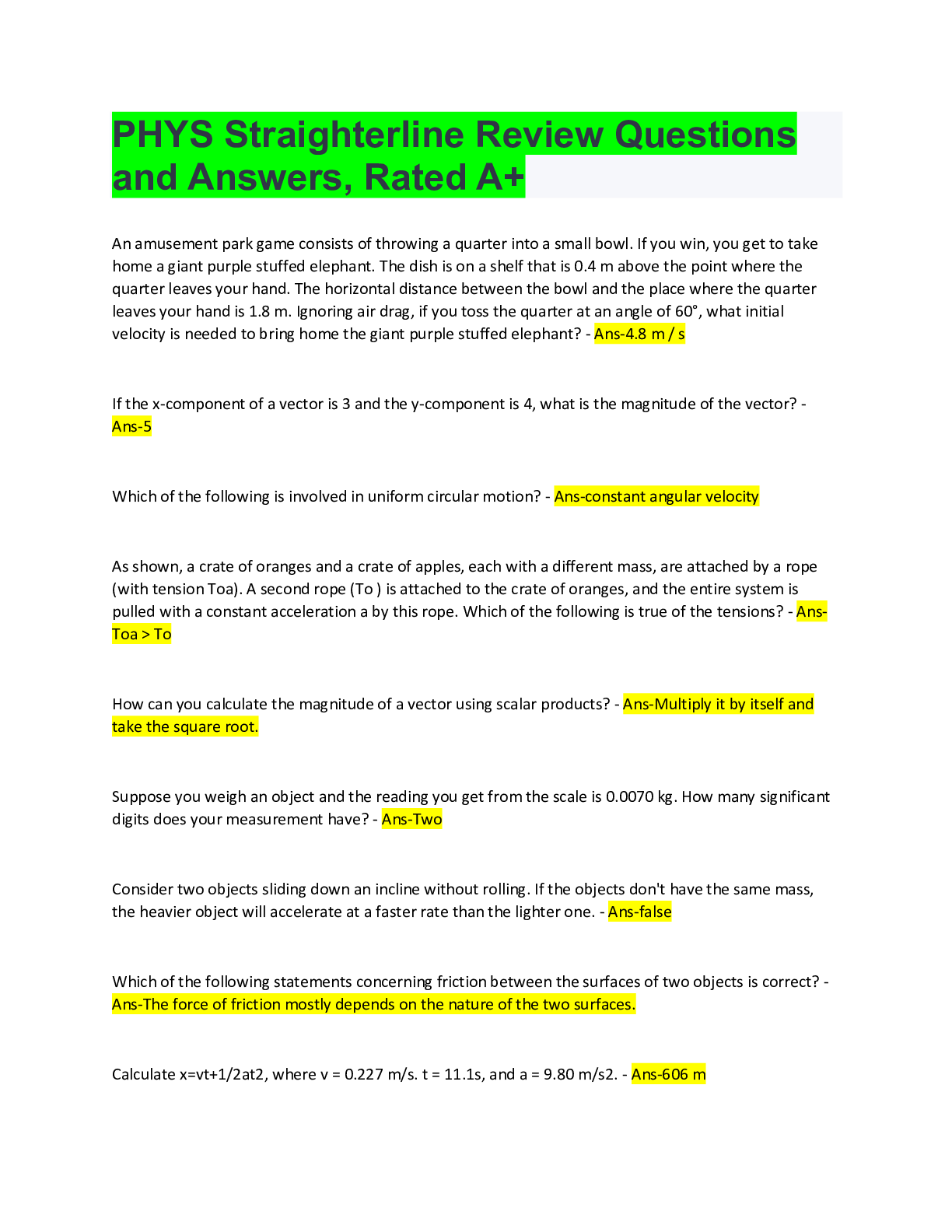


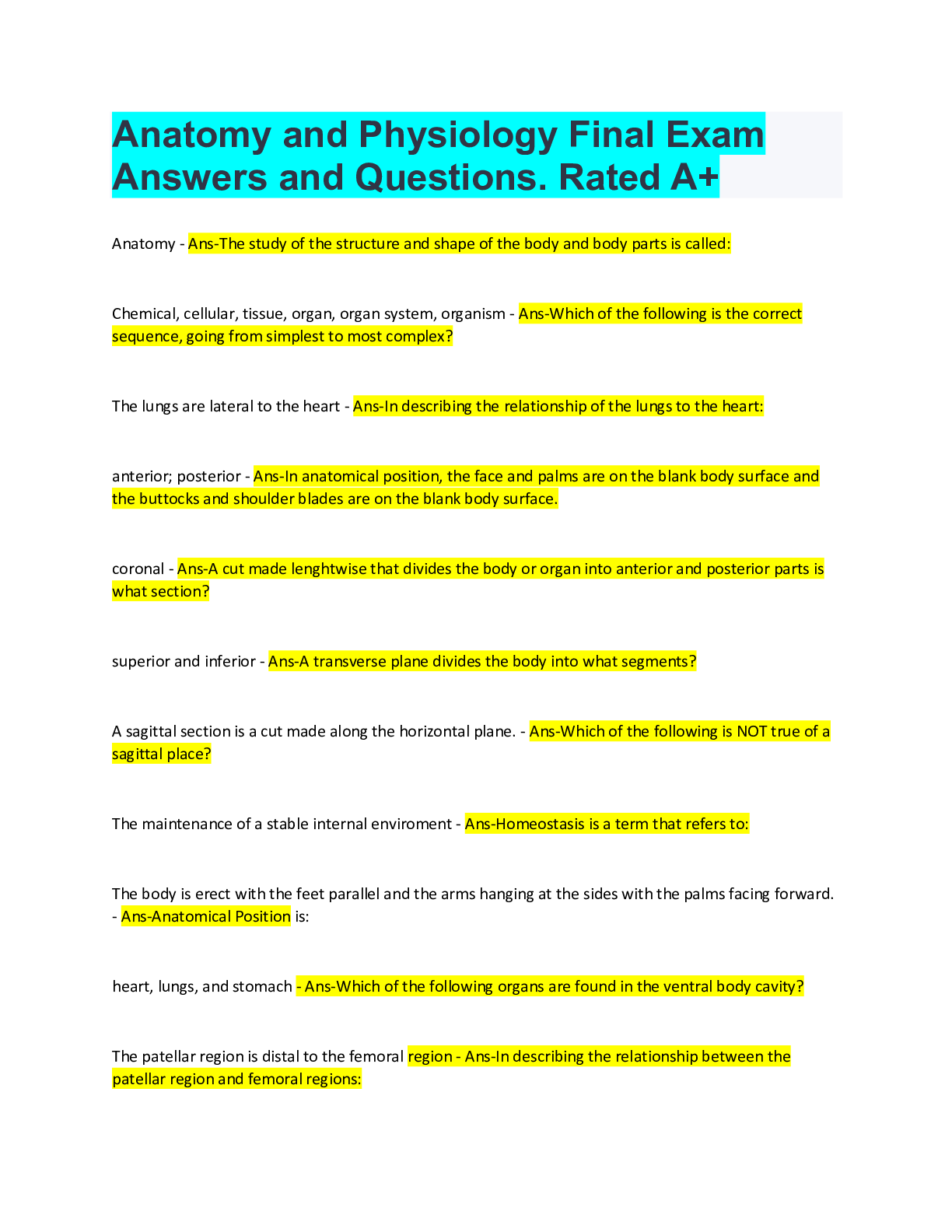


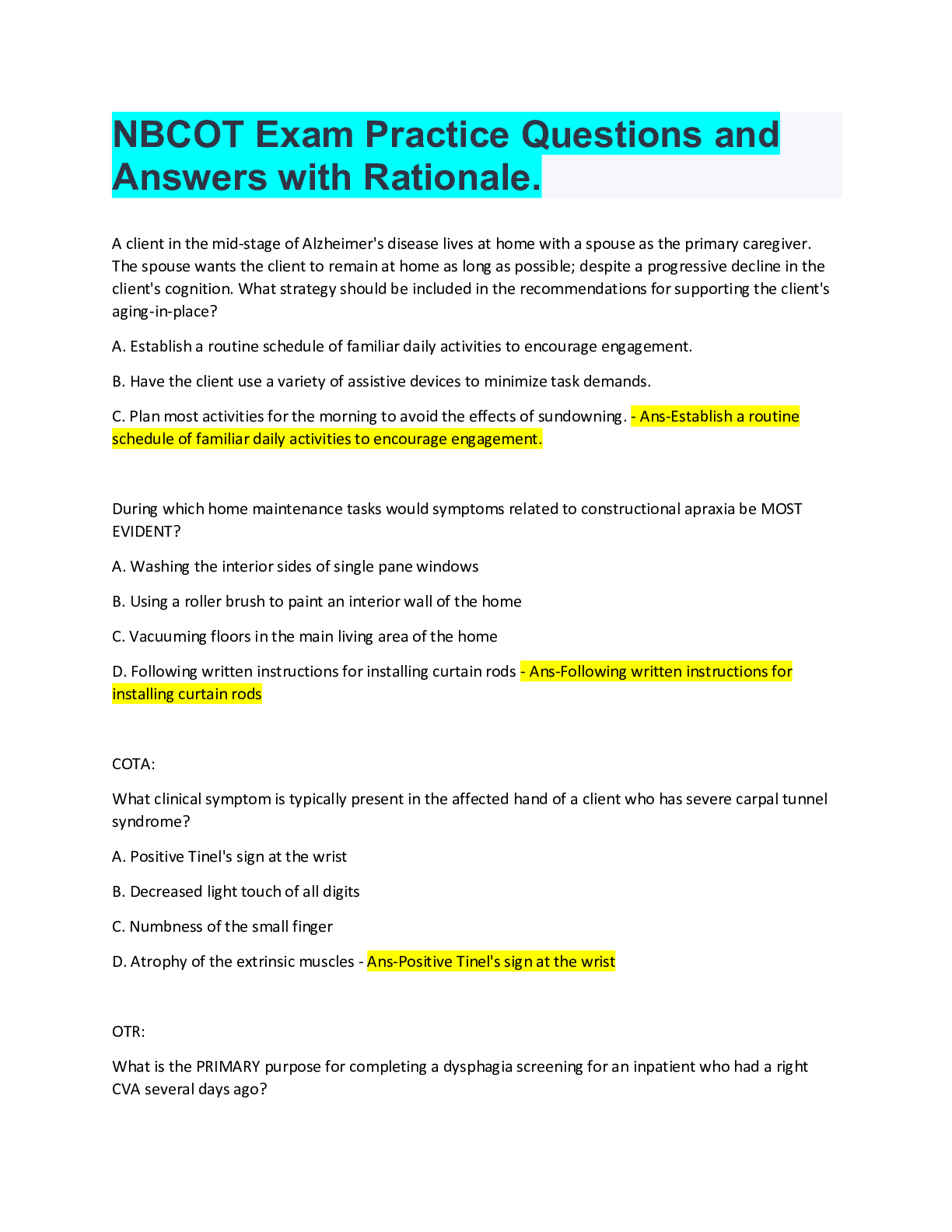

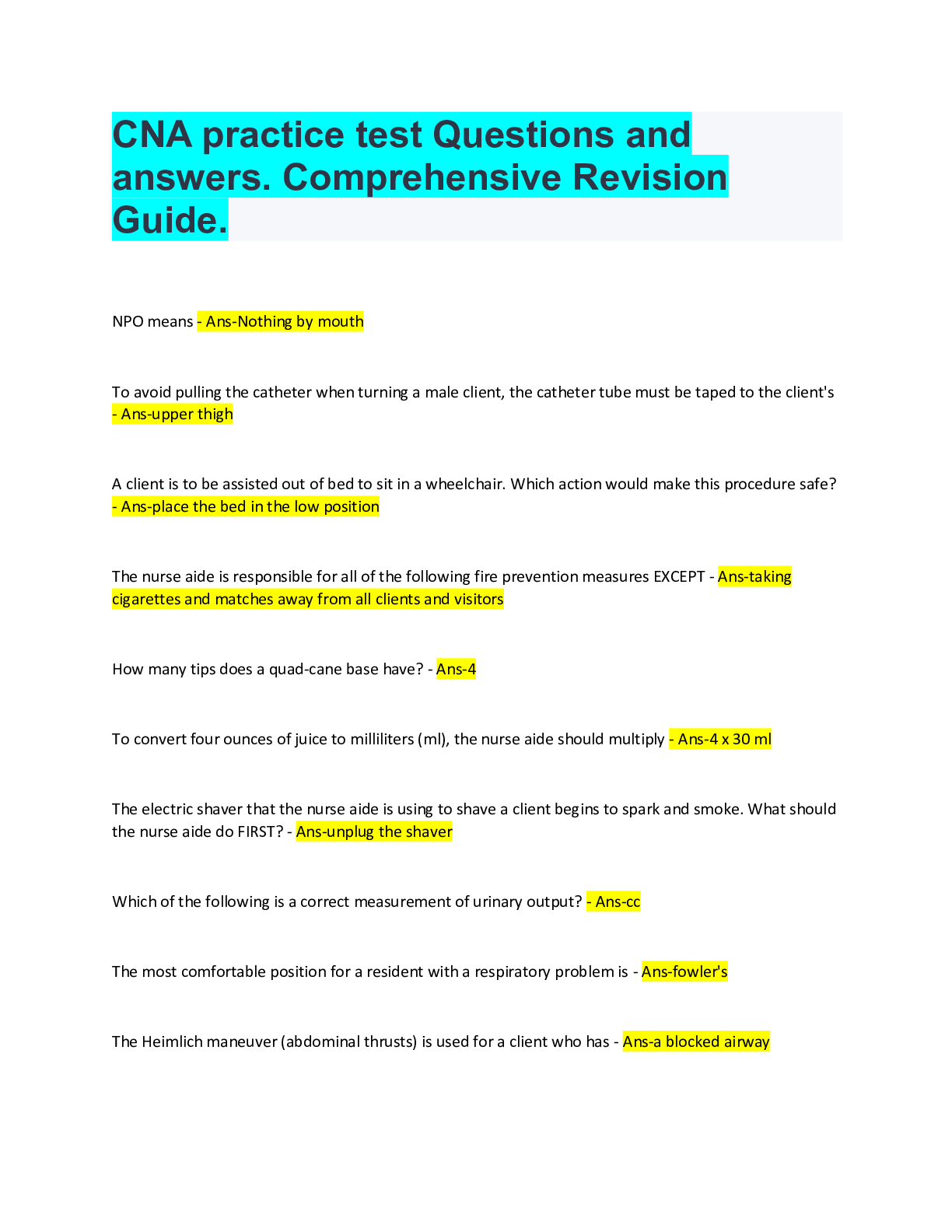
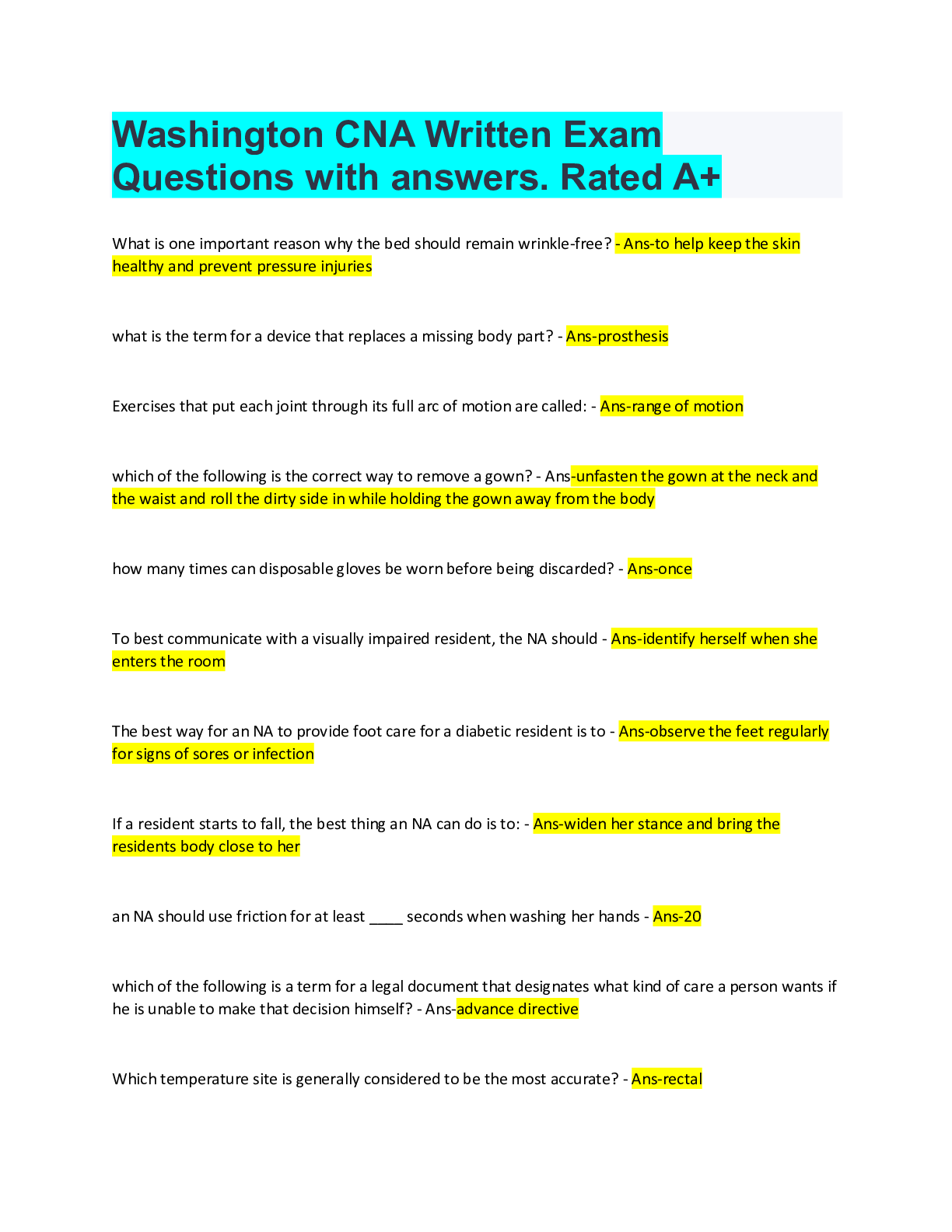

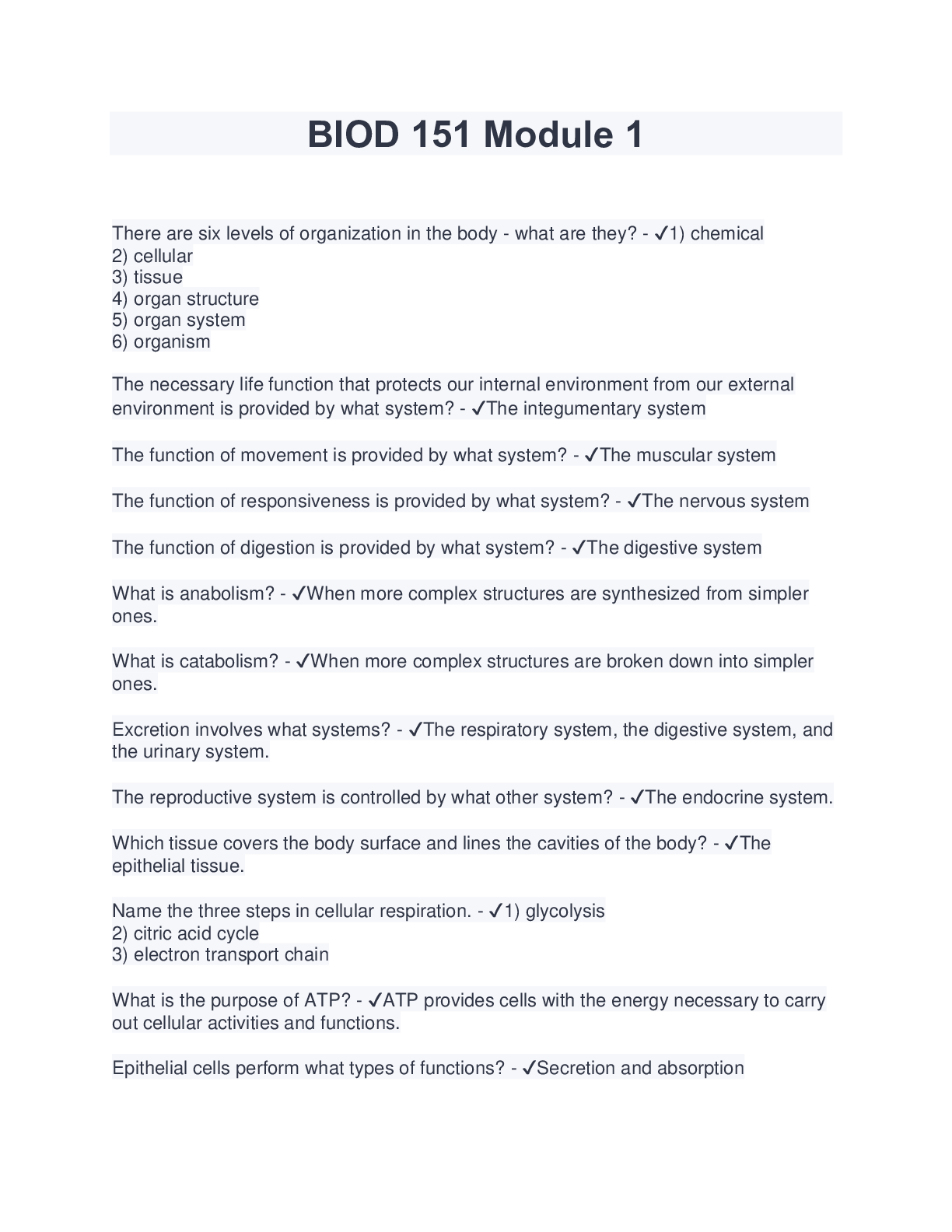



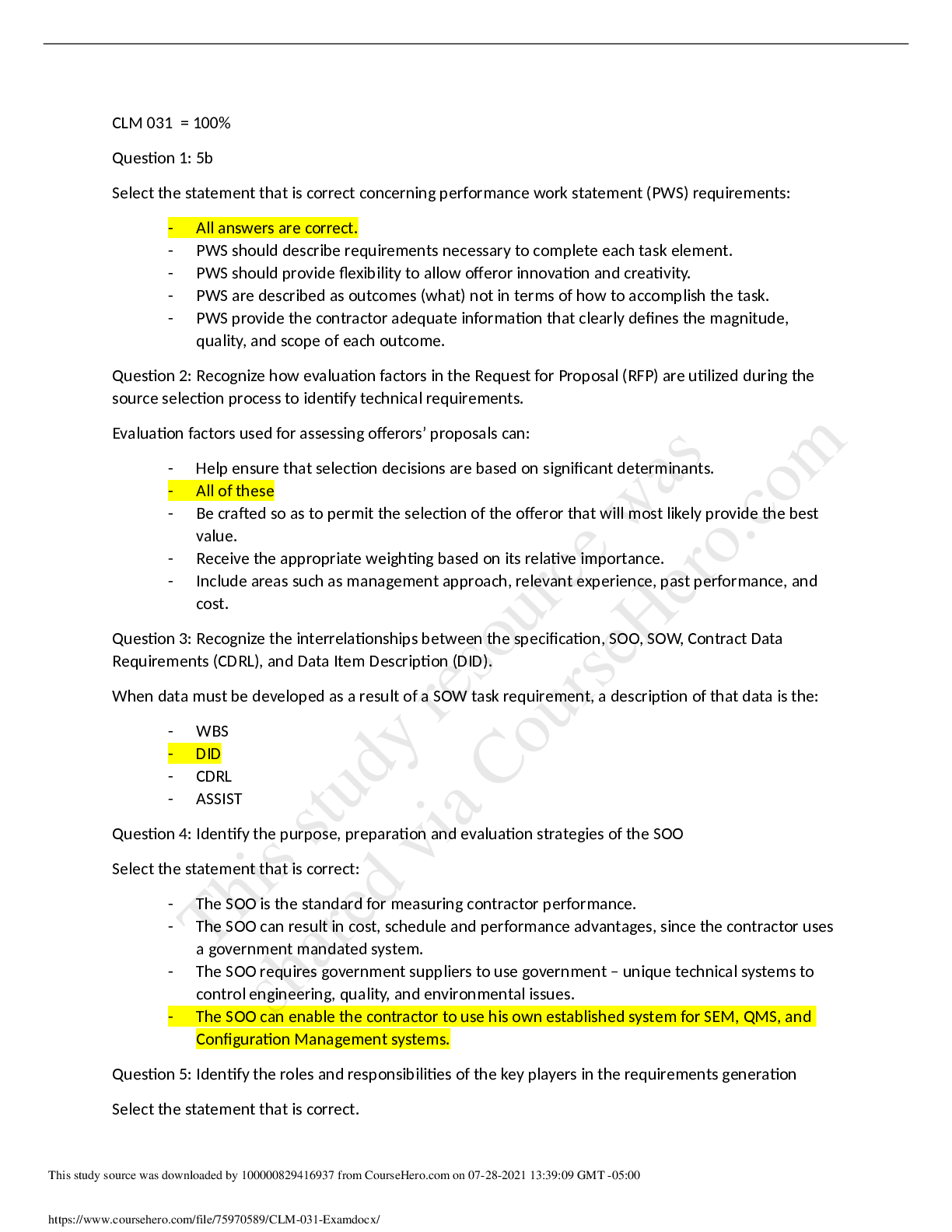
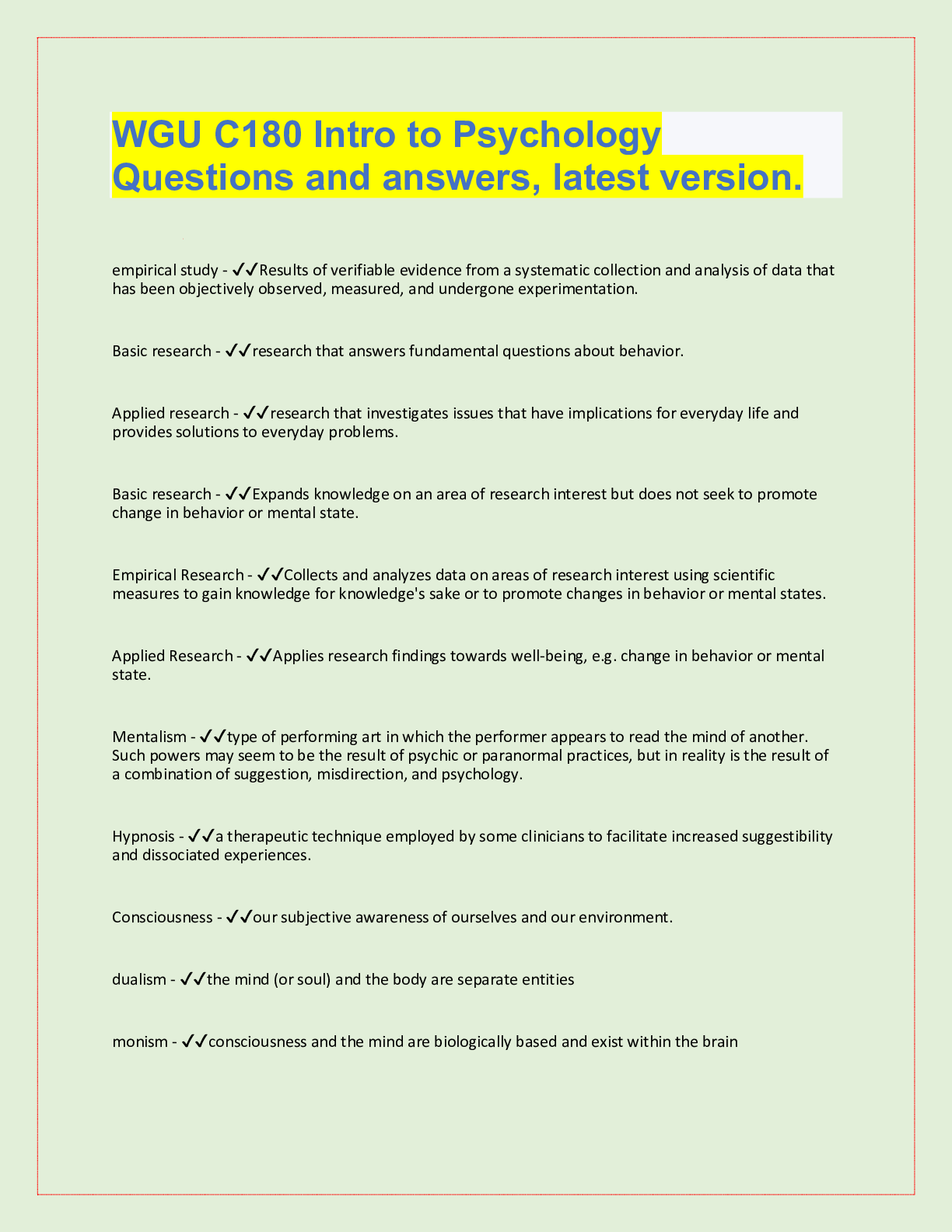
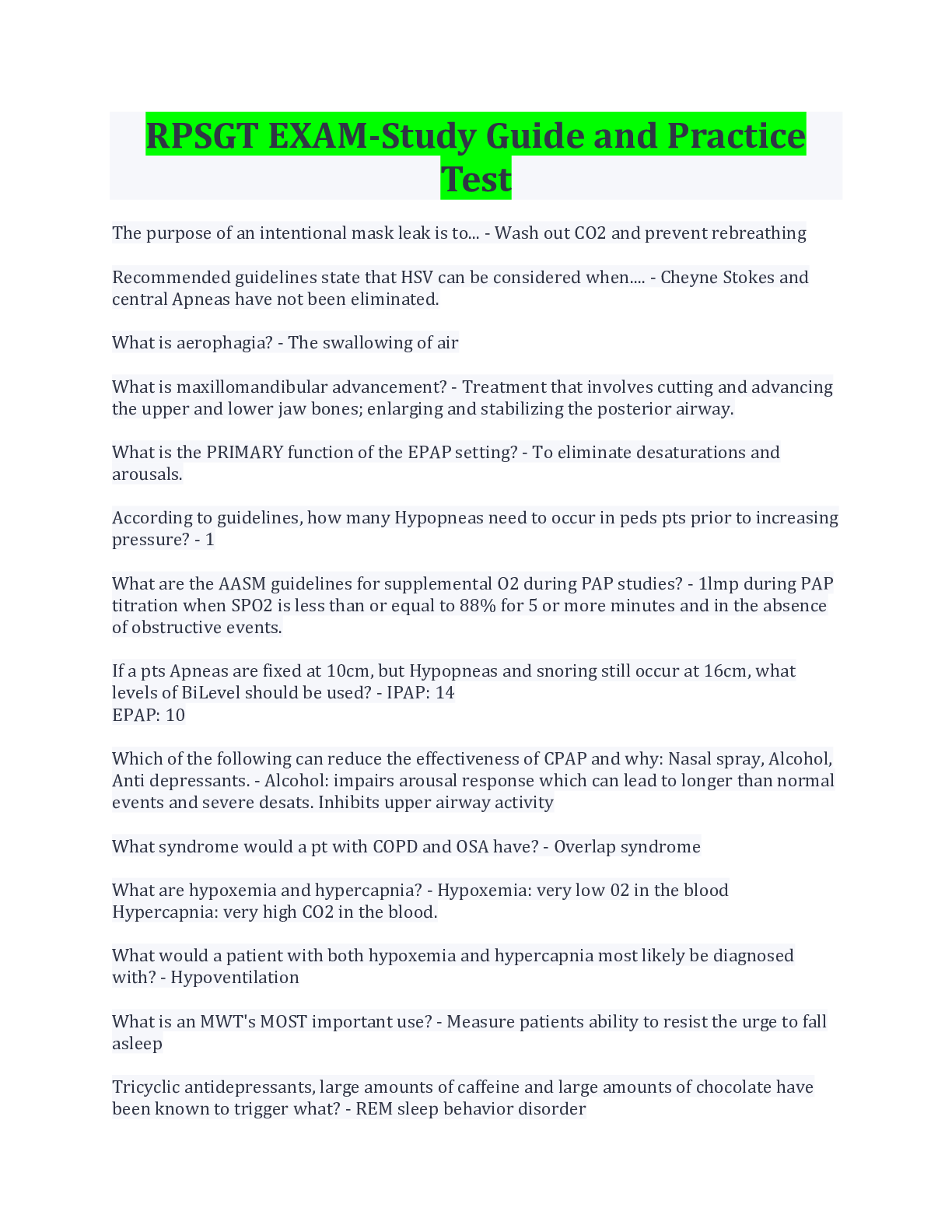

.png)

.png)

